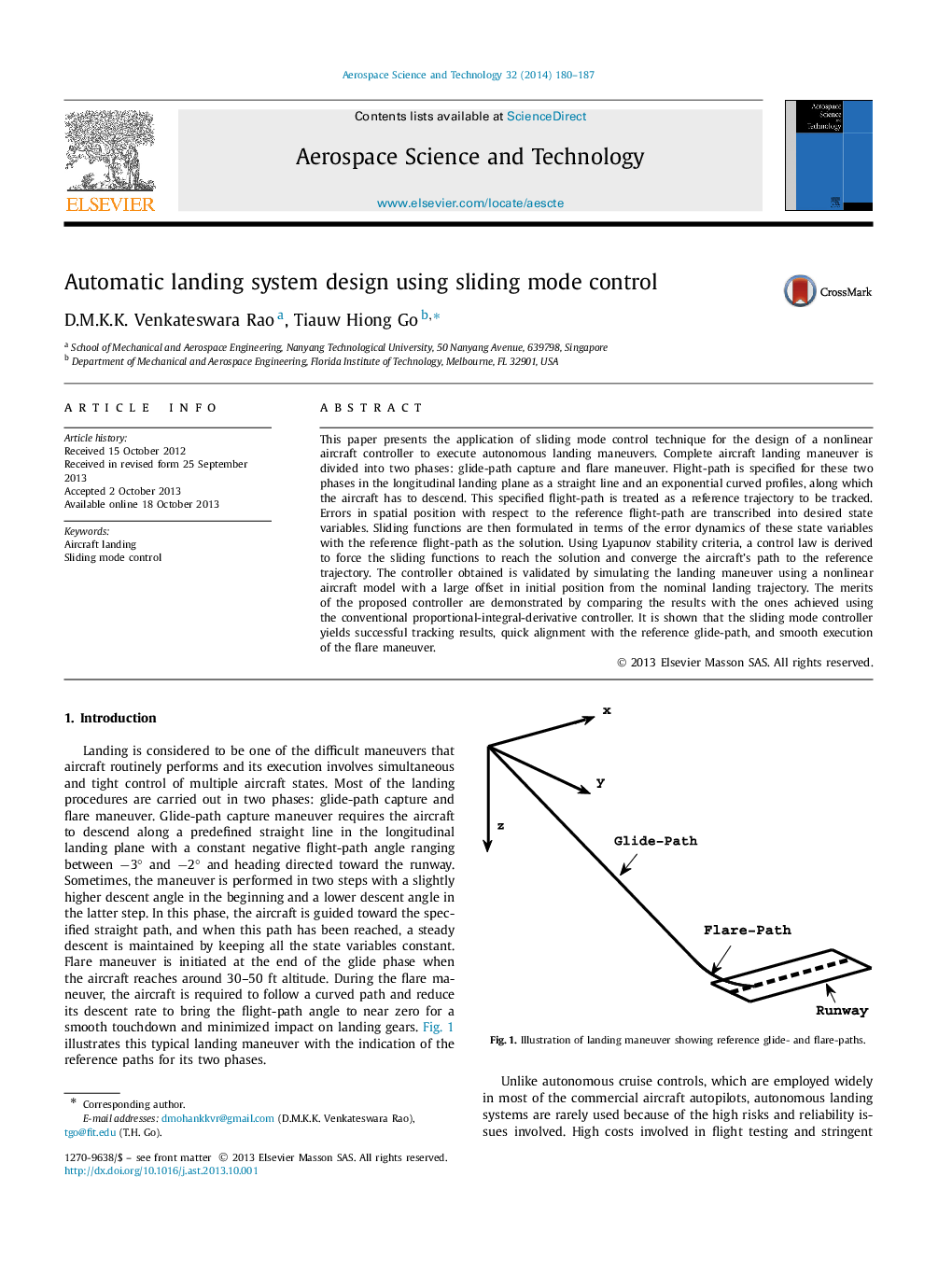| Article ID | Journal | Published Year | Pages | File Type |
|---|---|---|---|---|
| 1718107 | Aerospace Science and Technology | 2014 | 8 Pages |
This paper presents the application of sliding mode control technique for the design of a nonlinear aircraft controller to execute autonomous landing maneuvers. Complete aircraft landing maneuver is divided into two phases: glide-path capture and flare maneuver. Flight-path is specified for these two phases in the longitudinal landing plane as a straight line and an exponential curved profiles, along which the aircraft has to descend. This specified flight-path is treated as a reference trajectory to be tracked. Errors in spatial position with respect to the reference flight-path are transcribed into desired state variables. Sliding functions are then formulated in terms of the error dynamics of these state variables with the reference flight-path as the solution. Using Lyapunov stability criteria, a control law is derived to force the sliding functions to reach the solution and converge the aircraftʼs path to the reference trajectory. The controller obtained is validated by simulating the landing maneuver using a nonlinear aircraft model with a large offset in initial position from the nominal landing trajectory. The merits of the proposed controller are demonstrated by comparing the results with the ones achieved using the conventional proportional-integral-derivative controller. It is shown that the sliding mode controller yields successful tracking results, quick alignment with the reference glide-path, and smooth execution of the flare maneuver.
